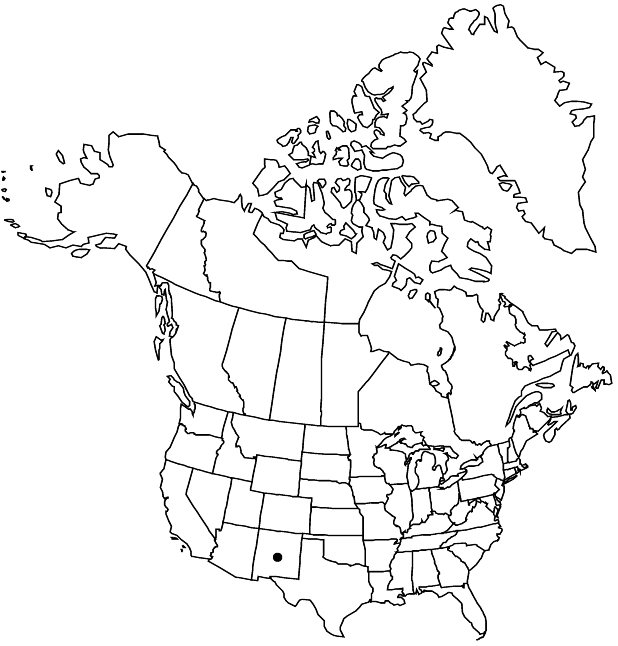Heuchera pulchella
Contr. U.S. Natl. Herb. 16: 130. 1913,.
Herbs subcaulescent; caudex branched. Flowering stems 7–15 cm, short stipitate-glandular. Leaves: petiole short or long stipitate-glandular; blade orbiculate, deeply 5-lobed, 0.5–2 cm, base cordate, lobes rounded, margins dentate, apex obtuse, surfaces short stipitate-glandular and sparsely long stipitate-glandular on veins abaxially, short stipitate-glandular adaxially. Inflorescences dense, (secund). Flowers: hypanthium moderately bilaterally symmetric, free 1–1.5 mm, reddish or dark rose, campanulate, 4–5.5 mm, short stipitate-glandular proximally, long stipitate-glandular distally; sepals somewhat spreading, darker red on tips, equal, 0.8–1.8 mm, apex obtuse or rounded; petals spreading, pink, lanceolate, (clawed), unlobed, 2–2.5 mm (longer than sepals), margins entire; stamens exserted 1 mm; styles exserted 1–1.8 mm, 1.5–2 mm, 0.1+ mm diam. Capsules ovoid, 5 mm, beaks divergent, not papillose. Seeds dark brown, ellipsoid, 0.8 mm.
Phenology: Flowering Aug–Sep.
Habitat: Canyons and mountain slopes
Elevation: 2700-3200 m
Discussion
Of conservation concern.
Heuchera pulchella occurs in northern and central New Mexico. It resembles H. abramsii, H. brevistaminea, H. caespitosa, and H. elegans; it is isolated geographically from the other species of this complex, all of southern California.
Selected References
None.
